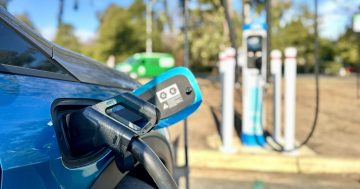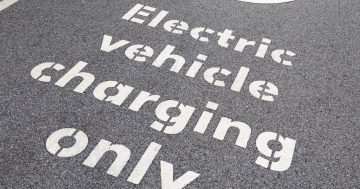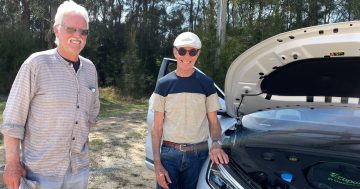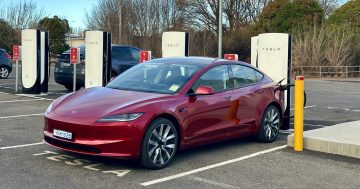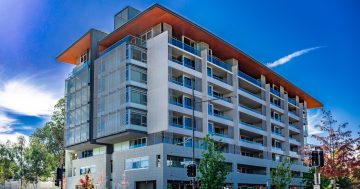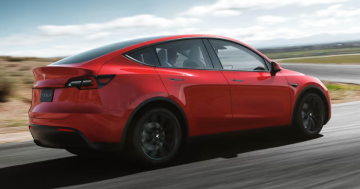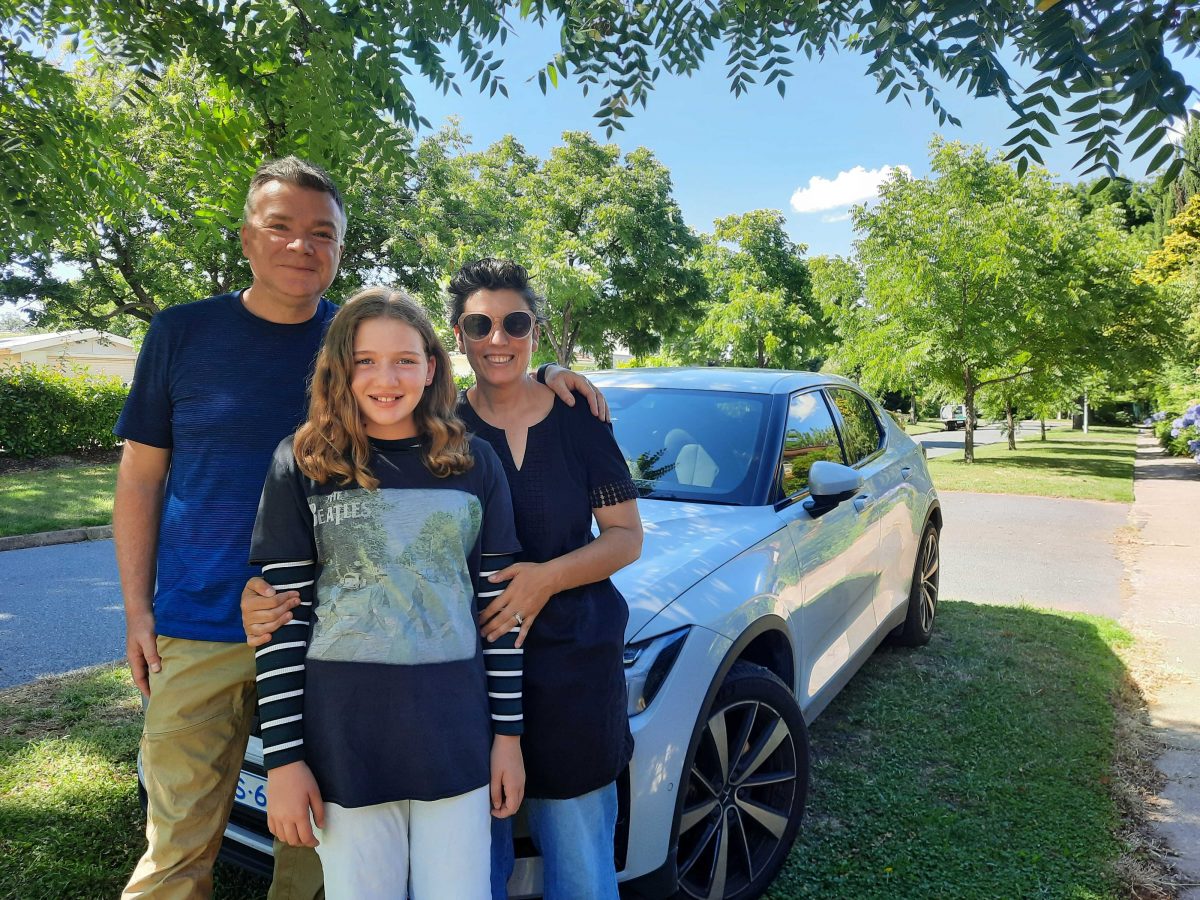
Charging ahead: Brent Fuller, daughter Frankie and wife Tania Losanno, and their Polestar2. Photos: Ian Bushnell.
The Fuller family of Narrabundah swapped an ageing petrol car for their first electric vehicle last year and haven’t looked back.
They are part of an accelerating trend of EV ownership in the ACT, with the number of vehicle registrations doubling last year from 1417 in November 2021 to 2871 registrations in November 2022.
The ACT is already leading the nation on zero-emission vehicle uptake, with 9.5 per cent of all new cars being EVs and ZEVs, and these will soon make up around one per cent of total vehicles registered in the ACT.
Brent Fuller told Region the timing seemed right to update the family car to an electric one when his family bought a Polestar2 sedan with a 380km range for about $65,000 early last year.
They have been reaping the benefits ever since, cutting their running costs significantly and taking advantage of the ACT Government’s two-year free registration scheme.
Mr Fuller says the monthly fuel bill has plummeted from $200 to $20 and without the need for regular servicing, the family will save about $1000 to $1500 a year.
A recent round trip to Melbourne cost them about $32, with a stop halfway to charge for about 20 to 30 minutes, something they would do previously anyway.
“There are significant savings before even considering the broader social savings as well, such as decreasing our carbon footprint,” Mr Fuller said.
“It’s also an incredibly pleasant vehicle to drive.”
He loves the quiet running and appreciates the power immediately available to overtake safely, compared with the old petrol car.
Range anxiety has never been a problem around town or on their regular trips to Melbourne.
The family has installed rooftop solar and a home charger thanks to the Government’s Sustainable Household Scheme, and uses the Plugshare app to locate chargers and plan their trips out of town.
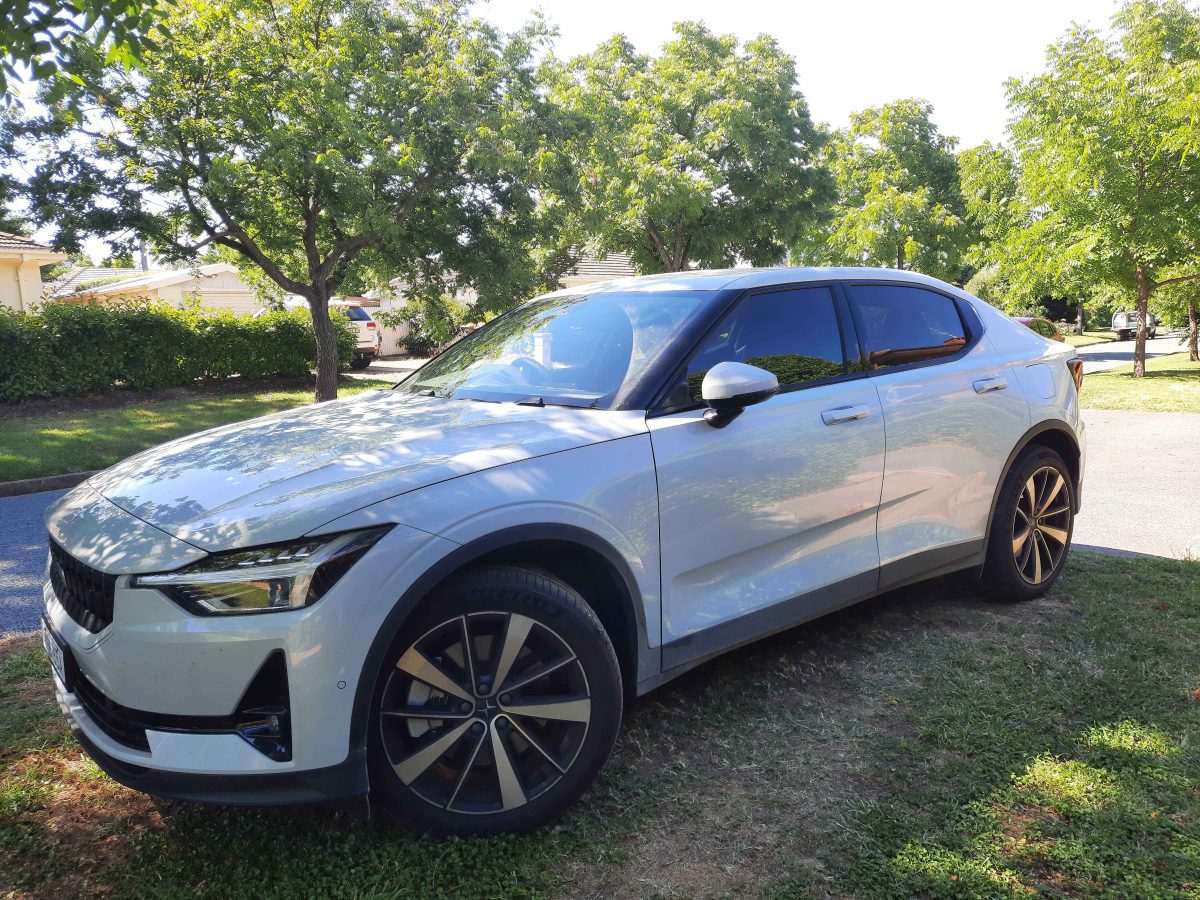
The Fullers’ Polestar2, a popular choice in Canberra. Photo: Ian Bushnell.
Mr Fuller knows he is in a fortunate position, but has no hesitation recommending the switch to electric.
“It’s a great opportunity, you can charge at home and not be concerned about the cost of running a vehicle. How many Canberrans drive more than 50 to 100 kilometres a day?” he said.
EPSDD Deputy Director-General, Water, Energy and Emissions Reduction Geoffrey Rutledge said most of the EV take-up last year was in the $60,000 range, with Tesla and Polestar the most popular brands.
Mr Rutledge said the increasing numbers and the fact that a fifth of all new cars in that price range were EVs made him optimistic that the shift was on in the ACT, despite price-point sensitivities and supply issues.
“What it tells me is that when price parity is available, then the switch to electric is not a difficult one,” he said.
The rego incentive and the $15,000 interest-free loans through the Sustainable Household Scheme were doing their bit.
In fact, just as many people were using the full amount to buy a second-hand EV such as a Nissan Leaf as a new EV, and it was also helping to buy a charger.
“What we’re seeing in the SHS is people adopting solar and they’re getting big systems, so 10 kilowatt systems, and then that leads them to try and then electrify everything in their home,” Mr Rutledge said.
“So then they get the reverse cycle, they get the battery or they get the electric vehicle.”
The change of Federal Government would also have an impact as the fringe benefit tax cut flows through, as well as the psychological effect of the Commonwealth fleet of 1500 to 2000 vehicles going electric and appearing on ACT roads.
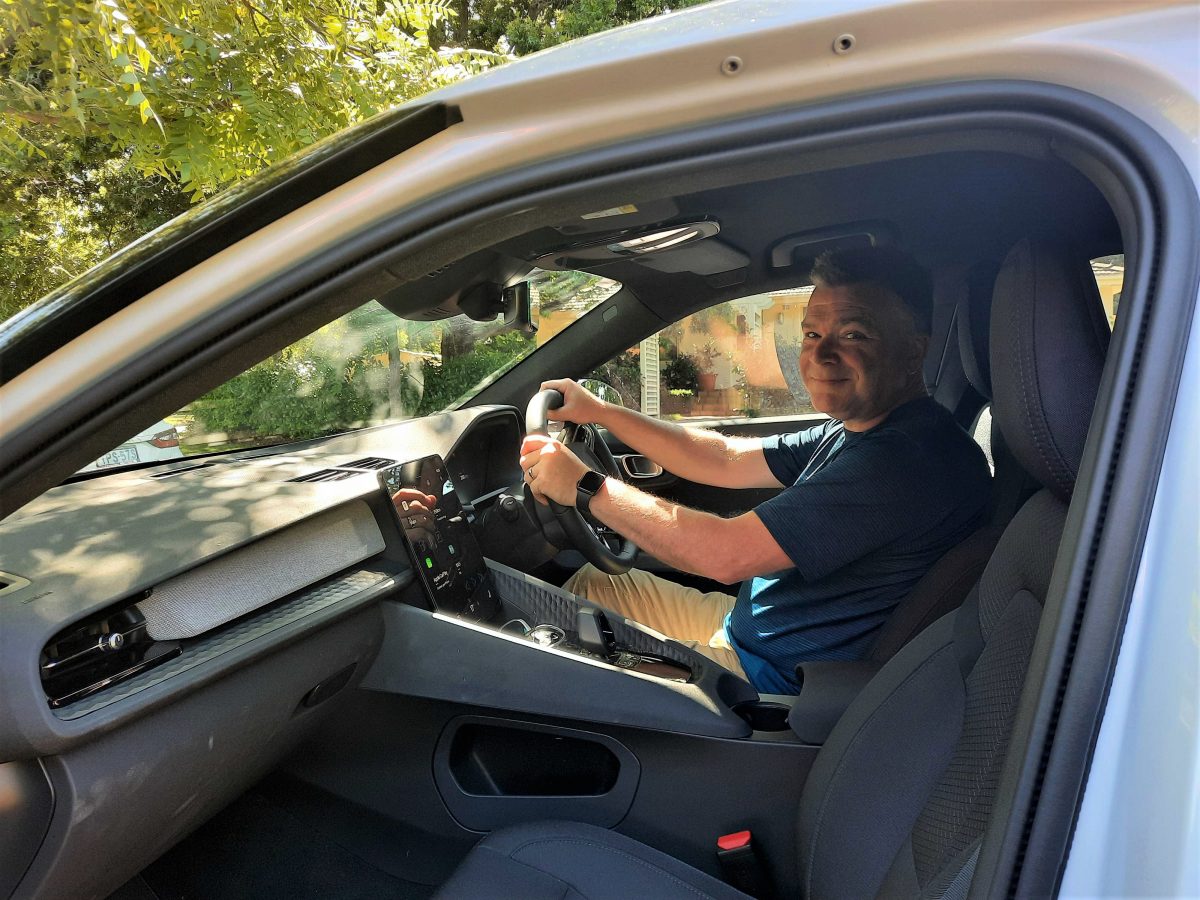
Brent Fuller behind the wheel of his Polestar2: “It’s an incredibly pleasant car to drive.” Photo: Ian Bushnell.
But Mr Rutledge said the real gamechanger would be if the Federal Government tightened the fuel efficiency standard to align with Europe which would open the country up to more EV models and stop Australia being a dumping ground for outmoded petrol, and diesel cars.
He said new car sales in the UK for December were 34 per cent electric, 27 per cent hybrid and petrol and diesel 40 per cent.
The boost in supply and price reduction would also give private fleet managers more incentive to make the change and reap savings.
Mr Rutledge said the ACT Government’s fleet switch had reduced its running costs by about 80 per cent.
The imminent arrival of the Chinese brand BYD, which offers a more accessible $45,000 SUV, was another positive sign.
“Interestingly, they’ve opened shops in Sydney and Melbourne and are about to open a shop in Woden which tells me that they must see Canberra as a place that’s willing … that they see as a good market,” Mr Rutledge said.
For those worried about the demand on the power grid when EVs become the norm, Mr Rutledge said the work by the directorate and Infrastructure Australia showed that it would be offset by increased solar PV and greater energy efficiency of other appliances.
There would be local pinch points particularly in townhouse and multi-unit developments but these could be planned for.
To alleviate range anxiety, the Government is rolling out a further 77 public charging stations across Canberra, most of which should come online this year. It has committed to 180 chargers by 2025.












